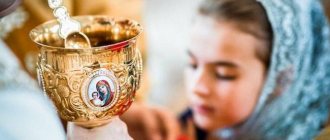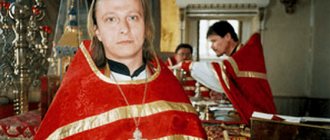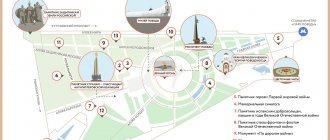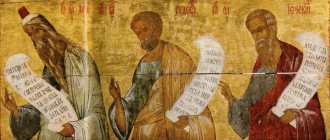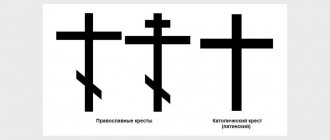short biography
Name: Saint Nicholas
Years of life: 270 - 345
State: Greek colony of Lycia (now Turkish territory)
Field of activity: saint, miracle worker
Greatest achievement: one of the most revered saints in both the West and the East, a kind of prototype of Father Frost and Santa Claus
Saint Nicholas can rightfully be called one of the most beloved and revered saints not only in the Orthodox, but also in the Catholic religion. His fame as a miracle worker who could grant wishes and help in difficult times spread among believers both during his life and after his death.
Saint Nicholas was born in 275 in the Greek province of Lycia, in the town of Patara in Asia Minor. His parents were fairly wealthy people who were able to give their son an excellent education. Since childhood, the boy was distinguished by great religiosity. His uncle was the bishop of Patara, so religion, one might say, surrounded Nicholas from birth. He spent a lot of time reading the Holy Scriptures and praying, and soon realized that he liked it. Soon Nikolai decided that he would devote his entire life to God.
The uncle-bishop could not help but notice his nephew’s zeal and took him as an assistant to the church. A few years later, Nikolai received the priesthood and became a mentor to the parishioners. Since the family was wealthy, Nikolai did not need anything, however, when his parents died, he distributed all the wealth to people in need. After all, the main wealth that he had was faith in God and a kind heart.
When Nicholas grew older, he decided to go to the Holy Land. On the way, he had a vision - the devil descended onto the ship of travelers. The saint realized that a storm was coming and the ship could sink along with all the passengers. He began to pray earnestly, and the waves subsided. Once in Jerusalem, Nicholas offered a prayer to the Lord for help and miraculous salvation.
After a short trip to the Holy Land, Nicholas returned to Lycia and became Bishop of Myra. It was the beginning of the 4th century, that is, terrible times for Christians, when Roman emperors persecuted believers as best they could.
Diocletian tried especially hard, who even executed his own wife when she, seeing the miracles of St. George, switched from paganism to Christianity. In 305, Emperor Constantine ascended the throne, and Christians breathed a sigh of relief. In the western part of the empire. In the East, the executions of Christians still continued, which ended only in 311. And thousands of believers flocked to Nicholas in all corners of the Eastern Roman Empire.
Death
By order of the emperor, they did not stop torturing the doctor. He was given to the circus to be torn to pieces by animals, but they did not dare to attack Panteleimon. Seeing this, the audience began to demand the doctor's forgiveness. In a rage, Maximian ordered the execution of everyone who praised the healer and the animals that did not kill him.
View this post on Instagram
A post shared by FERAPONT ICON (@ikonaferapont) on Aug 9, 2018 at 1:12am PDT
Icon of the Great Martyr Panteleimon
The ruler dared to take a decisive step, ordering the head of the Great Martyr to be cut off. The doctor was brought to the olive tree and began to prepare for execution. Panteleimon read prayers, and every time the sword was supposed to plunge into the neck, the blade became soft and did not harm him. The soldiers who carried out the execution, seeing this, recognized God. The Lord appeared to Panteleimon and called his companion by the name that parishioners now know.
The cause of the healer's death was his own desire. He accepted the execution, and milk flowed from the wound from the sword along with blood. The olive tree on which the martyr was hanging began to bear fruit with healing berries. This made people around to believe in God. The saint's body was set on fire, but the flames did not touch him. Then the remains were buried not far from the place of execution.
Miracles of St. Nicholas
There was a once rich man who lost everything and fell into poverty. He had three daughters. Since they had no dowry to offer to potential suitors, he became desperate about what to do with his daughters and how to marry them off. In desperation, he decided to put them into prostitution, as he considered marriage impossible for them. Saint Nicholas somehow learned of this man's intentions and one night secretly took a bag of gold with him into the house. He threw the bag through the window into the house, and, as some say, it fell into the stocking or shoe of his eldest daughter.
Realizing that this was God's providence, the man gave this daughter in marriage with the dowry that she received. Saint Nicholas did the same thing two more times, providing bags of gold to the other two daughters, keeping himself a secret from the man and his three beauties.
A familiar picture, isn't it? This is where the tradition in the West of putting gifts in socks or stockings came from. And Saint Nicholas became associated as a saint with gifts, later “renamed” to Santa Claus and Father Frost.
Travelers and sailors turned to Nicholas for help and advice (it’s not for nothing that in Greece on the seashore you can find small churches dedicated to the Saint - the wives and mothers of sailors who went to sea have long prayed there for their men to return home). One of the miracles is connected with the sea. One day, while sailing to Alexandria, the ship was overtaken by a storm, and one of the sailors fell overboard and died. Nicholas miraculously resurrected the deceased.
Another miracle is associated with the icon of the Saint. One day, Prince Mstislav of Novgorod became seriously ill. In his delirium, he had a vision that an icon from the St. Sophia Cathedral in Kyiv would help him.
He ordered the ship to be equipped, but it did not reach Kiev - a terrible storm broke out on the Msta River. The sailors had already begun to say goodbye to life, when suddenly the waves subsided, and an icon depicting Nicholas appeared on the surface of the water. The subjects joyfully returned to the royal chambers and gave it to the prince, who, having touched it, immediately recovered.
Let us not forget that prayer to the Saint has a very powerful effect. An akathist to Nicholas can change his fate if he reads it for 40 days in a row. If a prayer comes from a pure heart, sincerely, in front of a lit candle and an icon, Nikolai always hears and helps.
Orthodox Life
The daily life of saints, their exploits and miracles is an incomprehensible mystery. Of course, everything secret attracts. How the lives of saints are written and what “ laws of genre ” in one of the most important types of church creativity - hagiographic literature, says Archimandrite Sylvester (Stoichev), senior assistant to the rector of the KDA for educational and methodological work, member of the diocesan commission for the canonization of saints.
Archimandrite Sylvester (Stoichev)
– The lives of saints occupy a central place in the Christian education of a person. From the first centuries of Christianity, many generations of believers were brought up based on the life examples of saints of God. Up to the present day. Father, please tell us what the lives of the saints are and what is their function?
– Writing the life of a saint is part of the canonization process. The life is created on the basis of a detailed study of biographical materials and testimonies. The purpose of the life is not just to provide biographical information, but to illustrate by what criteria the Church identifies a saint in a person and how exactly She did this in a particular case.
– How is a life written?
– In the Ancient Church, the basis for writing lives was acts of martyrdom and testimonies left by eyewitnesses. Naturally, over time, the process of canonization became somewhat more complicated, including regarding the compilation of the life. At the present stage, during canonization, sources of biography are collected and studied in detail, often involving narrow specialists in various fields: historians, lawyers, of course theologians and canonists. The result of such painstaking work is, among other things, the writing of a life, if a decision is made about canonization.
– Why do they say that the lives of the saints are the life of the Lord himself?
The Apostle Paul has these words: “It is no longer I who live, but Christ who lives in me” (Gal. 2:20). St. John Chrysostom, blessed. Theodoret of Cyrus, bl. Theophylact, explaining them, emphasizes that the grace of God changes a holy man so much that he does not do anything willful that would contradict the teachings of Christ the Savior, but everything he does complies with the word of the Gospel so much that one can say: “It is not I who live, but Christ who lives in to me". Paul, as if continuing this thought, says in another Epistle: “Let this mind be in you which was in Christ Jesus” (Phil. 2:5).
– By virtue of His nature, God cannot be cognized by people, as the essence of things in the sensory world is cognized: directly, entirely and in its entirety. Gaining a true understanding of God is beyond human capabilities. How can Christians know God?
– It should be taken into account that, on the one hand, in Christian theology there is a doctrine of the so-called natural Revelation, which implies a certain kind of path based on natural abilities, by revealing which a person can come to the idea of the Creator.
But he cannot move further through his own natural abilities, so the Lord reveals himself. Thus, knowledge of God presupposes Revelation. It is with the Revelation of God that the Sacred History of Humanity begins. The goal of religion is not just the idea of God, but a connection with Him, a relationship. And in this regard, the process of cognition includes the fulfillment of the will of God. The Lord reveals Himself and at the same time shows the way to Himself. The Creator does not just say that He exists, but declares: in order to come to Him, you need to follow His law. The Orthodox Church, by canonizing saints, once again in its history shows everyone: this is the path along which you can come to God, this path was followed by the saint we glorify, and all of you who want to be saved, follow this same path, for many have walked it before you and multitude of God's people.
Shebuev Vasily Kozmich (1777–1855) “Dimitri of Rostov”. Rostov Architectural and Art Museum-Reserve
– In 1689, the first book “ Lives of the Saints ” by Demetrius of Rostov was published (September, October, November). What made him take on this work? What sources did he use?
– It is necessary to understand the historical realities of that time. In the field of theology, this is a time of Western influence. Much research has been written on this topic. It would be naive to believe that influence was limited only to theological systems. The degree of influence is assessed differently, but in any case it was quite large-scale and affected many aspects of church life.
Saint Demetrius faced the difficult task of writing the lives of the saints, given that the number of sources was limited. There are saints about whose lives a lot of material has been preserved or, on the contrary, information is scanty. All we know about individual saints is that they were born, retired somewhere for Christian deeds, and died righteously, for example, 50 years later. That's all. It is impossible to write a lengthy life based on these data. The task of the author of hagiographies in such cases becomes much more complicated. Under such conditions, the work of the author of hagiographies can be compared with the work of an icon painter, who often has no information about the saint he will paint. In such cases, in icon painting there is a tradition of depicting according to the deeds suffered: martyrs in such and such a color scheme, saints in such and such, monks in such and such. That is, it is precisely the image that is created that reflects the Church’s idea of the feat of martyrs, bishops, righteous laymen, etc. And the indication of the name indicates who exactly is depicted. The compiler of hagiographies sometimes uses similar methods when there is a lack of data. And this is natural, since, I repeat, the life of a saint is not a biography in the generally accepted sense of the word and not the memoirs of contemporaries, but a verbal icon of the saint. There are studies on exactly how such a genre of spiritual literature as hagiography developed in Byzantium and Rus'.
All Saints Cathedral
– Father, were there any standards in hagiographic work?
– In studies devoted to hagiographic literature, one can come across the statement that in Byzantium the life of St. Fyodor the Studite and some other saints. But this does not mean at all that the facts of his biography were attributed to other saints, but only suggests that the indicated life was a kind of guideline when writing similar texts. For example, if I want to write a good sermon, I will be guided by an existing good sermon, for example, by St. Philaret Drozdov.
– Was approximately the same scheme used in relation to the lives?
- Yes. In each biography it was necessary to indicate the primary worldly position: the origin of the saint, his upbringing, the internal spiritual revolution that led either to faith in Christ, or to the decision to accept martyrdom, or to the desire to enter a monastery. And, finally, the crown of life is martyrdom, confession, the acquisition of gifts: prayer, tears, insight, etc. This is roughly the pattern, so to speak, that lives were compiled according to. But there was not always information available to cover all these circumstances. And we are not just talking about ancient saints.
Take the lives of the new martyrs. Often we know that a priest studied, for example, at the Kyiv Seminary, which he graduated from in such and such a year, was ordained as a priest and sent to such and such a diocese, and that’s all. From the investigation file we learn that he was accused of such and such. And then - a death sentence. But we have no information about what filled this man’s life, what circumstances he had to endure, what feats he endured, what experiences he experienced in the cell.
– That is, we do not have the opportunity to know in detail how a person lived and felt during tests of faith, torture and abuse?
- Undoubtedly. But we need to understand that even a short life reveals to us the greatness of the feat of this or that ascetic, and even more so of a martyr.
When Saint Demetrius wrote his texts, he also encountered similar things. Therefore, it must be taken into account that for writing each individual life he had different volumes of source material. The hagiographer has lives that are not very detailed, which can be called a hagiography. But in any case, he did a tremendous job, which testifies that a whole host of saints have been revealed in the Orthodox Church, that they were, are and will be.
Because the Church cannot exist without saints, for Her task is holiness. We are called to holiness. The task of the church writer is to point out this holiness.
– The Lives of the Saints is an eternally unfinished book...
- Absolutely right. Since there are and will be saints in the Church, for the Holy Spirit abides in Her.
– What materials did Saint Demetrius use, and where did he look for them?
– I think that exploring the sources used by the saint is the future task of church science. The main thing to understand when talking about his works is that he had a mission to enrich church writing with hagiographic literature. He has done a great job in this direction.
– Father Sylvester, what do to be like?
- Good question. I’m not a futurist, I don’t look into the future (laughs). A variety of circumstances may occur, various situations and situations may arise. But the main task of the Church was, is and will be salvation. I am sure that the Church coped with this mission in the Byzantine era, and during medieval Rus', and during the Soviet hard times. She will fulfill her destiny both now and in the future too.
Interviewed by Natalya Goroshkova
Relics
Nicholas died in 345 and was buried in a church in Myra (now the city of Demre in Turkey). At the end of the 11th century (in 1087), Italian traders came to the city, who, lacking something more mundane to steal, illegally took out almost all the relics of the Saint and brought them to the island of Bari. A few years later, Venetian merchants followed the same scheme, stealing the remaining parts of the relics and adding them to those already available in Bari. Now the relics of St. Nicholas are kept in the Basilica on the island; a small part of the relics was brought to Venice to the Church of St. Nicholas on the island of Lido. According to legend, the relics have miraculous powers, which is why millions of believers come to venerate them. For example, in the summer of 2021, for the first time in almost 100 years, part of the relics left Bari and was brought to Russia. And in Moscow and St. Petersburg, more than 3 million Russians came to honor the saint.
Temples of St. George the Victorious
Naturally, such a powerful saint cannot “get by” with just one temple. Many Christian countries have at least one cathedral named after a martyred warrior. It is enough to list such countries as Russia, Belarus, Georgia, Greece, Kazakhstan (even there are Orthodox churches named after the saint), Cyprus, Lithuania, Latvia, Moldova, Israel, Poland, Romania, Germany, France, Norway, Turkey. There is probably not a single country (perhaps with the exception of strictly Muslim ones, for example, Saudi Arabia) where there are not temples dedicated to St. George.
